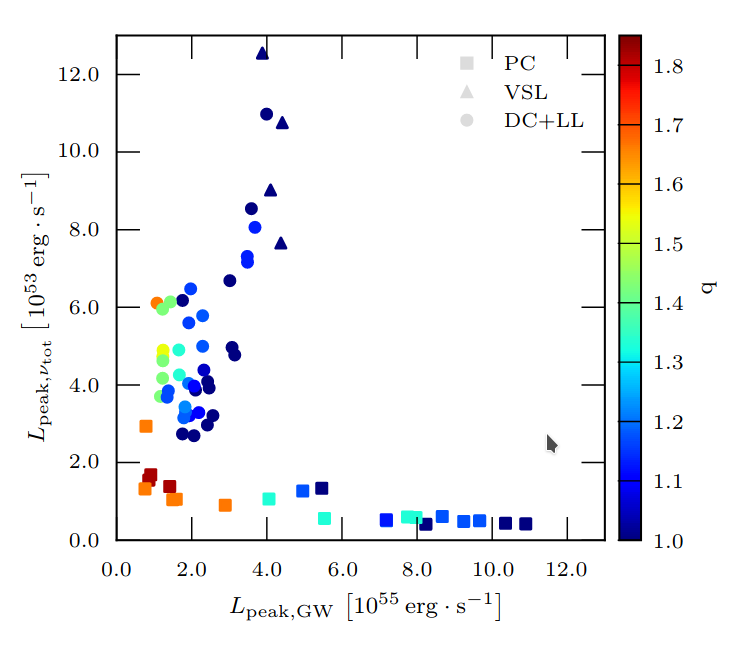Neutrino emission from binary neutron star mergers: characterizing light curves and mean energies
In 2111.13005 we analyze neutrino emission from a large sample of merger radiation hydrodynamics simulations in Numerical Relativity, covering a broad range of initial masses, nuclear equation of state and viscosity treatments. We extract neutrino luminosities and mean energies, and compute quantities of interest such as the peak values, peak broadnesses, time averages and decrease time scales. We provide a systematic description of such quantities, including their dependence on the initial parameters of the system. We find that for equal-mass systems the total neutrino luminosity (several 1053erg s−1) decreases for increasing reduced tidal deformability, as a consequence of the less violent merger dynamics. Similarly, tidal disruption in asymmetric mergers leads to systematically smaller luminosities. Peak luminosities can be twice as large as the average ones. Electron antineutrino luminosities dominate (initially by a factor of 2-3) over electron neutrino ones, while electron neutrinos and heavy flavour neutrinos have similar luminosities. Mean energies are nearly constant in time and independent on the binary parameters. Their values reflect the different decoupling temperature inside the merger remnant. Despite present uncertainties in neutrino modelling, our results provide a broad and physically grounded characterization of neutrino emission, and they can serve as a reference point to develop more sophisticated neutrino transport schemes.
The paper data are available on Zenodo.org.
Read more
